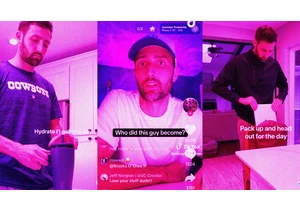Despite all the talk about flexibility as the future of work, more and more prominent business leaders are pushing harder than ever to get their people back into the office. Tech leaders have gone on record saying they still don’t understand how to build great management systems in a remote work setting. Others have warned that executives will try to “boil the frog” to get people back into the office through implicit pressure that could breed proximity bias.
As a technical leader and founder, I understand the reluctance some executives feel around hybrid and remote work, and was initially pretty skeptical myself. We invested a lot of resources building our largely in-office culture before the pandemic. Remote work arrangements at my company, Gusto, were the exception. However, our unexpected foray into remote work and more recent experience with a hybrid model reminded me that leadership’s reflex to stick with what we know is not always best for our people, and runs contrary to our role as innovators.
The tech industry is known for big-picture innovation, and has driven more change in the last 10 years than in the previous 80–yet many companies are still clinging to outdated, inflexible work models. Tech leaders should pioneer new models, not resist change. If tech companies can’t invent new management approaches to support remote and hybrid work, we can’t expect to tackle the world’s biggest problems.
Here’s how Gusto approaches our current hybrid work challenges—and how I overcame my skepticism to embrace this setup for the long haul.
Hybrid experimentation
From Gusto’s earliest days, I had deep convictions about the value of in-person collaboration. It was so important to me that when we were first building the company, I moved into a closet in my co-founders’ house so we could work together in person—even though I lived just 30 minutes away.
We infused this ethos into the company for years before the pandemic. For instance, we developed a culture of pair programming in the office (providing multiple workstations with side-by-side mirrored monitors to support collaboration) and had frequent whiteboard sessions for group brainstorms. Every year, we took the entire company on week-long “workations,” where we’d all stay at a remote Airbnb and work together on a big project.
When we first went remote, I worried we would lose this collaborative culture and revert to working in silos. Amazingly, our teams have found remote alternatives to our in-person collaboration rituals that are just as good, if not better. By the time we could safely return to the office, our people were pair programming more frequently than before thanks to our investments in tools like Tuple and Miro, which are purpose-built for remote engineering collaboration. Our cycle time, a common indicator of the engineering function’s health and productivity, improved by 23% after we went remote.
It became clear that my preferred way of working wasn’t necessarily best for my team or for the company. As an engineering leader, I had to accept that it would be irresponsible for me to ignore the data and demand employees come back to the office full time.
Hybrid results and benefits
As a hybrid company, we’re just as productive as we were before the pandemic (if not more so). Our engineering team’s engagement has remained strong, and we’ve actually seen a boost in retention since the transition to hybrid work.
Our Denver-, New York-, Canada- and remote-based teams feel they are on a more level playing field with their San Francisco-based colleagues since there’s no center of gravity around any office. Tactically, we’ve expanded our talent pool far beyond those city limits and become more efficient by eliminating commute times for many employees.
Hybrid work also gives tech companies an opportunity to become more diverse, inclusive and equitable. Not only can we hire smart, capable people anywhere, but a wealth of data shows that employees in historically marginalized groups want the option to work remotely. We’re hearing the same thing from our own employees. To ignore this data in favor of “getting back to normal” would counteract our RISE (Representation, Inclusion, Social Impact, and Equity) work.
Now that we’ve committed to hybrid work for the long haul, we’re innovating to make it the best it can be. This spring, we created a Head of Remote Experience role to design an equitable experience for the 40 percent of our workforce—including 30 percent of our most senior leaders—who have chosen to work remotely full time. We hired someone with a UX background for this role, with the goal of applying the same design rigor to our employees’ experiences as we do to create a delightful product experience for our customers.
Lessons learned
Our transition from in-person, to remote, and now to hybrid work has reinforced the value of staying open-minded to innovation not just in our products, but also in how we work. In the coming months, we’ll see more leaders at other companies put implicit or explicit pressure on their teams to get back to the way things were. The ones that can adapt to new challenges with their people’s needs in mind will have the advantage in a tight talent market.
Edward Kim is the cofounder and head of engineering, product, design, and data for Gusto, an HR and payroll processing platform.
Chcete-li přidat komentář, přihlaste se
Ostatní příspěvky v této skupině
On this week’s Most Innovative Companies podcast, Cloudflare COO Michelle Zatlyn talks with Fast Company staff writer David Salazar about hitting $1B in revenue and going global, as well as

If you’ve built an audience around documenting your 9-to-5 online, what happens after you hand in your notice?
That’s the conundrum facing Connor Hubbard, aka “hubs.life,” a creator who

OpenAI should continue to be

WhatsApp should prepare to leave the Russian market, a lawmaker who regulates the IT sector

This is an edition of Plugged In, a weekly newsletter by Fast Company global technology editor Harry McCracken. You can sign up to receive it each Friday and read all issues


